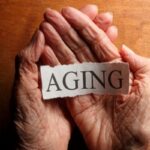Rheumatoid arthritis is an autoimmune condition that affects the joints. The immune system can attack healthy tissues in the body when there are autoimmune diseases.
The immune system attacks the linings of joints and causes RA. This can cause the joints to become inflamed and swollen. RA can also affect other parts of the body, so it is not limited to the joints.
Must Read: indications of trustworthy ophthalmologists in naples fl
The Arthritis Foundation estimates that approximately 1.5 million Americans suffer from RA. Three times as many people are affected by RA than men, according to their website.
- Age of onset in women with rheumatoidarthritis
- RA is often viewed as a sign of old age. However, it is not.
- The Arthritis Foundation states that the average age at which RA begins is between 30 and 60. Children can also develop it.
- Women are diagnosed slightly earlier than men due to hormonal changes that occur in the middle of the 30s and again in the 40s.
- RA can be a chronic condition. It can develop over time. There are periods of increased disease activity called flares and periods of remission.
Never Miss: 5 factors why health and physical fitness is very essential
Role of hormones in RA
Women are more likely to develop RA than men. However, symptoms may appear earlier in life and can be more severe.
Women are less likely to experience remission in the early stages, when symptoms are not apparent. Researchers are trying to figure out why.
Progesterone and estrogen, which are both reproductive hormones, may have a protective effect on RA symptoms.
Over a woman’s life, the levels of hormones can change. These levels can be affected by:
- pregnancy
- Postpartum
- Breastfeeding
- menopause
Endometriosis (EMO) and polycystic-ovary syndrome (PCOS), are two examples
- Hormonal medications
- Contraceptives include oral contraceptives and IUDs
- Hormones post-menopause
- A trigger could be hormones used in IVF treatment.
A study of middle-aged women suffering from RA showed that they had less joint pain during their periods and during pregnancy. This is because estrogen and progesterone levels are higher.
Also Read: vegetable beef barley soup
Experts agree that RA could be caused by sex hormones and environmental factors.
- Non-joint symptoms
- RA can present as a non-joint sign in the early stages.
- Fatigue
- low-grade fever
- Appetite loss
- Unintentional weight loss
These symptoms can be preceded by the pain in the joints that are often associated with RA.
You may experience recurrent bouts or prolonged fatigue, along with feeling unwell for weeks or months.
These symptoms can be accompanied by joint-related symptoms as the disease progresses.
- Joint symptoms
- Stiffness
- Morning stiffness in the joints is a strong indicator of RA.
It can last anywhere from one to two hours, sometimes even longer. It can also happen after prolonged periods of inactivity, such as naps or watching TV.
Simple daily tasks like opening a jar or buttoning a shirt can become difficult due to stiffness and reduced range of motion.
Joint pain and swelling
Active disease causes the affected joints to become red, swollen and painful. In the beginning stages of RA smaller joints such as the wrists, feet, and hands are most affected. As RA progresses, more severe symptoms may develop in larger joints such as the elbows, knees, hips and shoulders.
RA is different from other forms of arthritis because it attacks symmetrically. If your left wrist is inflamed, it’s likely that your right wrist will also be inflamed.
Rheumatoid nodules
The Johns Hopkins Arthritis Center reports that 20-30% of people suffering from RA will develop rheumatoid nosodules. These are firm, clumpy tissue lumps that form under the skin at bony pressure points.
Most commonly, Rheumatoid Nodules are found at the elbows. However, they can also be found in other parts of the body such as the fingers and over the spine or on the heels. They are usually painless and may appear in isolated or large clusters.
Most Popular: 6 yoga exercises to unwind
Deformity
Chronic inflammation from RA may lead to long-term damage to bone, cartilage and tendons. Advanced stages of RA can cause bone erosion and joint deformity. RA can lead to twisted fingers and unnaturally bent toes. Hands that are severely disfigured can affect fine motor skills, making daily tasks more difficult. Also, deformities can affect the wrists, elbows and knees as well as the ankles.




